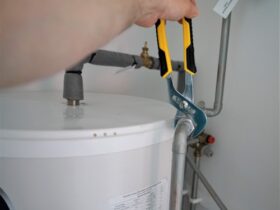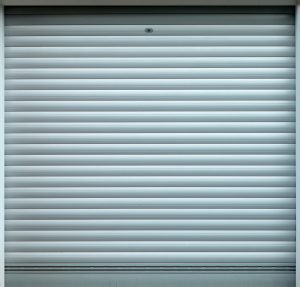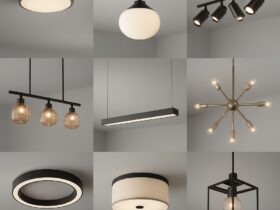There are many different garage door designs, each with its advantages. Some popular types include sectional, roll-up, slide-to-the-side, side-hinged, and tilt-up canopy doors. Sectional doors are the most common, consisting of panel sections connected with hinges. Roll-up doors are a more industrial option, typically found in commercial settings, but are also available for residential use. Slide to the side doors operate by bending to one side of the garage and moving parallel to the wall. Side-hinged doors, reminiscent of traditional barn doors, swing open and shut from a hinged frame on either side. Lastly, tilt-up canopy doors lift using a pivoting hinge mechanism, while tilt-up retractable doors operate similarly but retract entirely into the garage. This garage door guide provides a comprehensive overview.
Materials Used in Garage Doors
The choice of garage door material significantly impacts its durability, maintenance, and appearance. A typical composition of garage doors is fiberglass, steel, aluminum, and wood. Although they seem vintage, wooden doors need extra upkeep. Steel doors are standard in contemporary homes since they are solid and low maintenance. Aluminum doors are lightweight and corrosion-resistant, perfect for humid or coastal climates. Fiberglass doors look like wood with little maintenance and resist cracking and warping. Knowing the advantages and disadvantages of each material might help you choose the best one for your home.
Importance of Insulation
Insulation is essential for both temperature control and energy efficiency in your garage. Insulated garage doors can lower energy costs, assist in keeping a pleasant temperature in both hot and cold regions, and operate more quietly by absorbing outside noise. This is particularly important for those who use their garage for activities other than parking cars, such as a workshop, gym, or additional living space. The most common types of insulation used in garage doors are polystyrene and polyurethane. Polystyrene, similar to the material used in foam cups, provides a basic level of insulation and is usually found in single-layer and non-insulated doors. Polyurethane, on the other hand, is a denser, more effective insulator that can also add rigidity to the door panels, offering increased durability and energy efficiency. An insulated door is not just a luxury—it’s an investment in your home’s comfort and efficiency.
Design and Aesthetics
The appearance of a home’s garage door is essential, and modern trends often include sleek, minimalist designs, farmhouse styles, and custom decorative hardware. These designs can enhance your home’s overall look and feel, blending seamlessly with its aesthetic while adding a unique touch. Farmhouse-inspired designs with rustic wood finishes and decorative hinges complement contemporary styles with clean lines and neutral tones. Custom decorative hardware, such as handles and faux hinges, can further personalize the door. Additionally, glass panels or windows can add a distinctive design element.
Smart Technology in Garage Doors
Smart garage door systems provide improved security and convenience by including remote access, automatic closing, and integration with home automation systems. With the help of these capabilities, homeowners can watch and operate their garage doors from any location, providing them with extra security and peace of mind. Family members or caretakers can enter quickly with remote access and features that automatically close and stop inadvertent openings. Adding Google Assistant or Amazon Alexa integration to your home automation system improves convenience and control even more. Modern technology has transformed garage doors from simple manual barriers to smart additions to a home’s security infrastructure.
Weather Resistance Features
Your garage door needs weather-resistant components to shield it from inclement weather. Some of these qualities are weather sealing, wind load reinforcement, and rust-resistant materials. Weather seals operate as a barrier against outside elements at the door’s top, sides, and bottom. Wind load reinforcement is crucial to ensure the door can withstand high winds and debris, especially in hurricane-prone areas. Using rust-resistant materials such as aluminum or treated steel can prevent corrosion and help the door maintain its appearance and functionality over time.
Maintenance Tips
It’s essential to regularly maintain your garage door to keep it working well and to extend its lifespan. This maintenance includes lubricating moving parts, checking and replacing weather seals, and properly balancing the door. Scheduling professional inspections is a good idea as it can help catch and fix minor issues before they become significant problems. You should lubricate the hinges, rollers, and tracks at least twice yearly to reduce friction and keep the door operating smoothly. Checking and replacing the weather seals, especially the bottom one, will help keep your garage sealed against the elements and pests. To check the door balance, disconnect the opener and lift the door halfway. Scheduling annual professional inspections will help ensure your garage door performs optimally by catching and fixing any issues early on.



